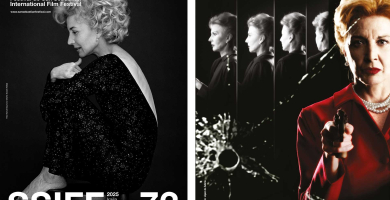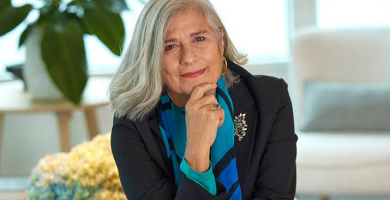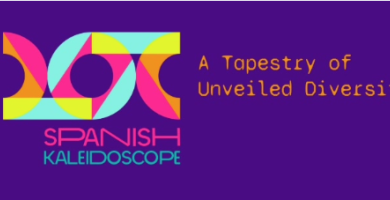
JOSEP CUNILL: “The interest in Elena Jordi lies in her strong personality, which led her to take on very powerful projects.”
This month we interview Josep Cunill. Born in Berga in 1957, he graduated in Philosophy and Arts and is a retired Philosophy teacher. He is the author of the book Elena Jordi. Una reina berguedana en la cort del Paral·lel.

He has spent over 22 years researching and vindicating the figure of Elena Jordi, the first female Spanish film director with the film Thais in 1918. With him we recover the figure of this unjustly forgotten pioneer of cinema, recognized entrepreneur and Paralelo theatre actress. Indeed, the Catalan Film Academy paid tribute to her in the Filmoteca de Catalunya and created an itinerary on her life. You can consult it here.
How did your interest arise in the figure of Montserrat Casals i Baqué, better known as Elena Jordi?
In 1994, during a dinner with friends, I mentioned Elena Jordi and, at the end, someone came up to me and told me that they were a distant descendant. Elena Jordi’s daughters died without any offspring. And this person told me that when they took charge of the flat of one of her daughters, they found a folder in the wardrobe with around 50 photos, which are those that appear in the book and which I have deposited with the Filmoteca so that they can be restored, consulted and conserved. Initially, I fell in love with these photos because they let me discover an aesthetic of the Belle Epoque and a woman of unique beauty. I belonged to the Àmbit de Recerques del Berguedà which has a magazine called L'Erol. The project was to write an article talking about this completely unknown character. I began to search in the archives of Barcelona, the Institut del Teatre, the Casa del Ardiaca which has the city’s historical archive, and I slowly but surely found information about her. After four or five years sorting through archives, the first edition of the book came out in 1999. There was no one left who could offer me an oral memory about that time. The fact that her daughters died without any offspring also prevented me from following that line. I did then discover that Sempronio, in some of his books, Permanyer and several columnists from Barcelona had already talked about her. I was able to meet and interview Sempronio. He was already an old man. It was difficult to find more immediate memories about this story. The current story begins in 2021 since the first edition had disappeared, and the Àmbit de Recerques proposed publishing a second edition.
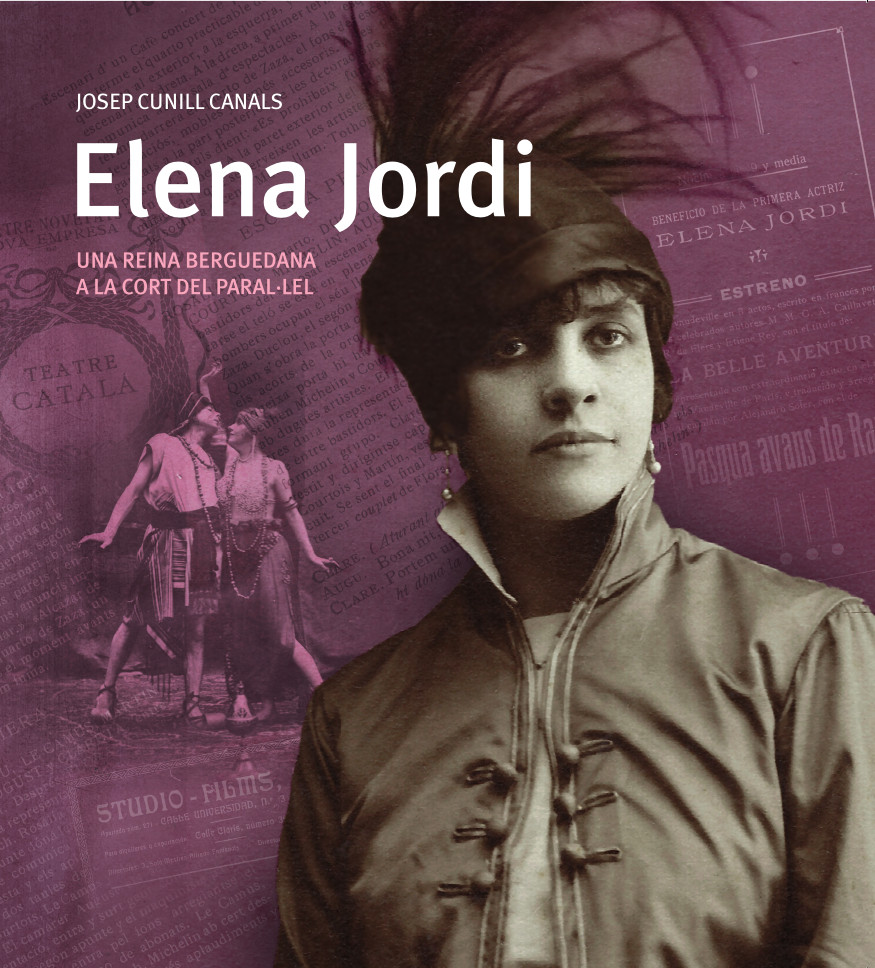
What can we find in this new edition? Does it give greater importance to cinema?
It was much easier to consult the archives, because they’re now almost all digitized; research is very different from in the 90s. On having access to many more newspaper libraries I was able to add 30 pages to the new edition, with a much better understanding not so much about the plays that she performed at the Teatro Español on Paralelo, but about tours around Catalonia that she went on with her company. There’s a lot more information. There are two aspects to Elena Jordi’s career. One is theatrical. She is a self-taught girl, who began with small roles as a young lady in Margarida Xirgu’s company, who gradually became well-known, but who was mainly limited to vaudeville theatre. Even so, she had her own company with her name and had the vaudevilles translated into Catalan. This would fit in with the phenomenon of Barcelona and Paralelo.
In 1999 I found, in magazines like El Cine, Arte y cinematografía or Mundo cinematográfico, which I consulted because they gave information about the theatres, a news item which I put in the first edition of the book. It said “Elena Jordi, the beautiful vaudeville actress, has turned to cinematographic art, producing, directing and performing in a film called Thais”. I didn’t pay much importance to it then, but I thought “that’s amazing; apart from being an actress Elena Jordi dared to bring out a film!”. This is how I now think that Elena Jordi has become more important. In the context of theatre, she wasn’t Xirgu; she didn’t take the leap to classical theatre, which was considered serious. She did vaudeville on Paralelo. She always reflected the fashions of Paris, the theatre there. But silent films and films in general have many scholars worldwide and, to my surprise, that’s how the information that I gave was picked up by a professor at the University of Massachusetts, Barbara Zecchi, a scholar of gender issues related to cinema, and a professor from the University of Mexico. These people began to focus on Elena Jordi. And there was talk about whether she could have been the first female film director in Spain. I was very excited when, in 2021, coinciding with the appearance of this second edition of the book, both the Catalan Film Academy and the Filmoteca paid tribute to Elena Jordi and also to all the pioneering women in films in Catalonia.
Do you think now is a better time for women like Elena Jordi, who have been forgotten, to be recovered with more studies?
When I began all this, Elena Jordi was just a girl from Cercs, whose father had a small business in the coal mines. She moved to Berga, got married, left her husband and went to Barcelona with her two daughters. I’ve always fought against the stereotypes which pigeonholed the women from Paralelo of that time. This cliché is always repeated: the poor girl who comes from the village to Barcelona. I said it from the beginning, and now it has been possible to confirm with the studies on mining in which her father appears, that her family had money. They moved to Barcelona and set up in a tobacconist’s on Calle Boqueria, where they were working for themselves rather than for someone else. Now, talking with people from the Filmoteca and from the Academy, I told them that, on studying Elena Jordi, I have discovered such a large amount of incredible pioneering women that it seems inconceivable that no one has paid homage to them or written a book about them. For example, Lola Paris shot some 40 films. She was the first actress of Studio Films, where Elena and Tina Jordi (her sister) shot their films. There are many pioneering women, each of which must have their history of a difficult struggle and who were important. Lola Paris even ran a film school for girls, created by Studio Films. These women were at the vanguard, and very little is known about them.
I’m not a film historian, at the most a minor biographer of Elena Jordi. I asked Esteve Riambau, Director of the Filmoteca, whether studies were being carried out of silent films in Barcelona and they know of very few. He told me that many film studies here begin with the Civil War, because it has great poetic, dramatic and political force. In all this previous period, the splendour of which we could place between 1914 and 1929, a great deal of silent films were produced which had to compete with the major productions of the studios of Rome or elsewhere in Europe. And Barcelona is one of the capitals of silent films, with studios such as Studio Films on Carretera de Sants or Hispano Films on Calle Craywinckel, both of which have now disappeared.
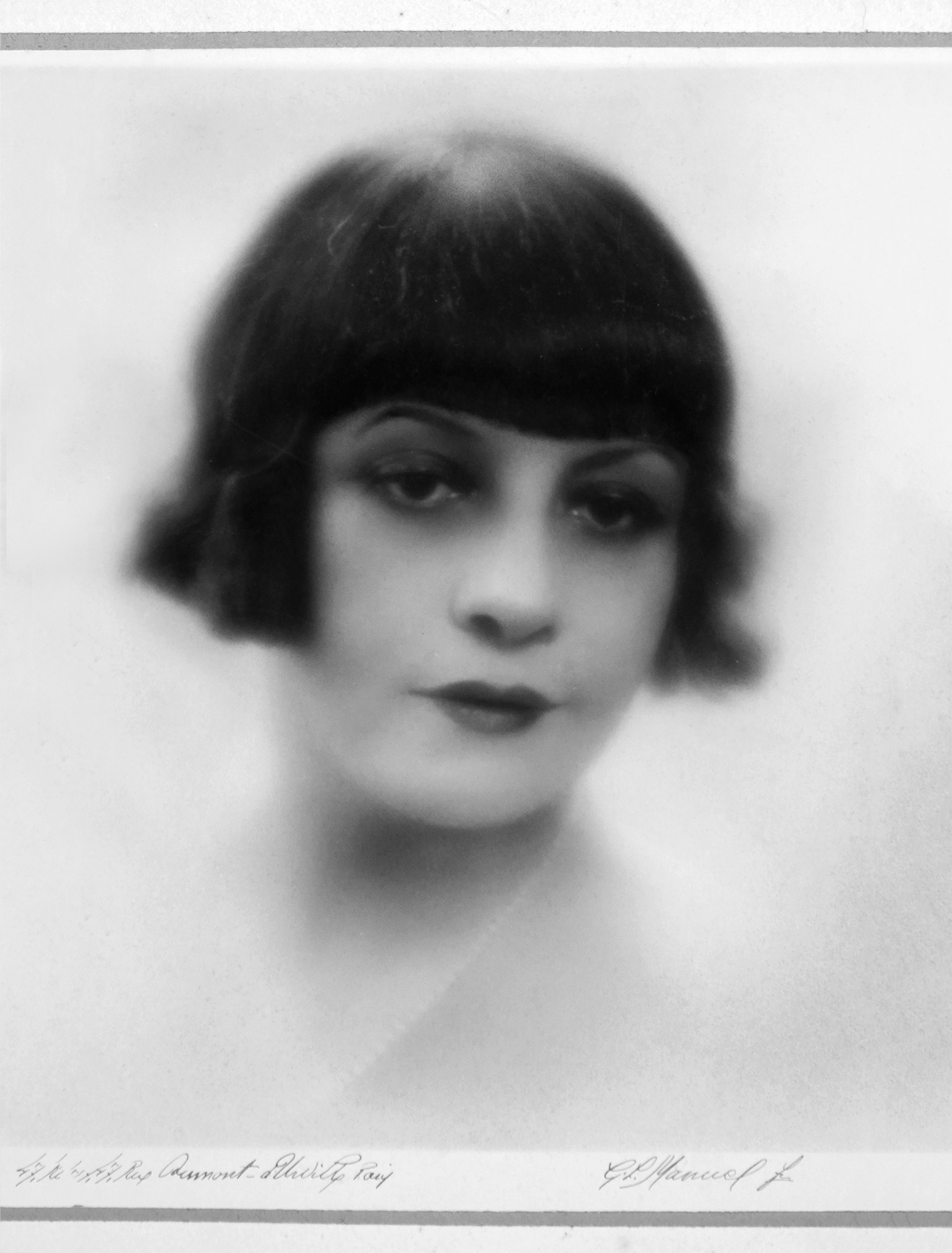
How did Elena Jordi start out in the world of film?
I got all my references about that time from people like Miquel Porter Moix, who I was able to meet, and Palmira González. They all say that it wasn’t unusual for theatres on Paralelo to be the reserve from which these new actresses emerged. In the case of Jordi, we have some realistic hypotheses, although they have not been completely proven, which appear to involve Domènec Ceret, a man from Sabadell who was linked to the world of theatre and who became artistic director of Studio Films. He belonged to Jordi’s company for a time prior to her appearance in the world of cinema in 1914-1915. They wanted a Catalan actress who had indigenous features, but who would also be on the level of the major actresses of international silent films. I have always thought that it was probably Domènec Ceret or someone from that environment who introduced her. Jordi was not in many films, and maybe even the quality wasn’t that good; there were other actresses who did much more. Lola Paris and Consuelo Hidalgo made a cycle of six or seven films together in Studio Films called Paris-Hidalgo.
The interest in Jordi lies in her strong personality, which led her to take on very powerful projects. In 1918, a theatre with her name was about to open at the top of Via Laietana, where the now closed Palau del Cinema is. The press at the time already said that on the door there was a sign saying Teatre Elena Jordi, but it appears that the building work stopped. There is talk about a plot which was worth half a million pesetas in 1917 and she built a theatre in the year that she made Thais. In 1999, when I put this news cutting on the film in the book, I didn’t know that in 1918 it made her the first woman in Spain to direct a film. There’s a sort of rivalry between Elena Jordi and the Valencian Helena Cortesina, whose film is from 1921-22 (and which isn’t conserved either), the one by Jordi being from 1918. But more things were known about Cortesina’s film: screenwriters, actors, ... Helena Cortesina always appears with her own page in studies on cinema in Spain, but in a footnote they say that there is a man in Catalonia who says that Elena Jordi directed a film in 1918.
I found an article from June 1917 in which Francisco Madrid, a journalist and well-known writer, interviews Elena Jordi and she says that she already has a film finished and gives information: that it was shot in the studios of Hispano Films on Calle Craywinckel, the artistic director was Alexandre Soler Marye, the son of the great stage designer of the Liceo Francesc Soler Rovirosa. The operator was Jordi Robert, very fashionable at the time. In another article it says that Elena Jordi is shooting a film, but that she has chosen actors who are not from her company and that the latter are upset. In the interview she talks about names that have caused a surprise. One is Rafael Bardem, from a well-known family, who came from the company of Rosario Pino, one of the pioneers of Spanish films. Gimbernat, who came from a family of doctors, from Romea’s company. She talks about where all the furniture came from, Almacenes El Siglo. And they ask her about the title, but she says that they don’t have it. The writer and journalist Josep Amich i Bert “Amichatis”, is the screenwriter. Now we know more about Thais.
What was Thais about?
I would link it to the character of avant-garde women of the Belle Epoque. Elena Jordi wasn’t afraid of very powerful plays. Margarita Xirgu was thrown out of the Teatro Principal on Paralelo when she performed Salomé by Oscar Wilde. Elena Jordi, who at the time formed part of Xirgu’s company as a young lady, who appeared on stage but did not have a speaking part, also did Salomé. In 29, when she reappeared, she did so with a scandalous play, which in Spain only three or four very powerful leading actresses dared to perform: The Captive by Edouard Bourdet, which deals with female homosexuality, according to the articles of the time. Thais would have formed part of this type of work about femmes fatales. It’s a novel by Anatole France and the script was written following the opera by Jules Massenet which made it famous. On investigating, I saw that it was performed at the Liceo almost every year. Maybe Jordi saw it there. Thais is the story of a prostitute, during Old Testament times. A mystic saint insists that he must save her and persuades her to enter a religious order. However, while she’s there, the mystic falls madly in love with her and wants to make her sin. That is when Thais dies, saying that she has discovered love of God which is superior to the love of men. Some claim to see a choice of subjects along “ideological-literary” lines by Elena Jordi or her advisers. This is not, however, known. What is true is that, apart from being a powerful entrepreneur, she took on very delicate subjects. They took The Captive around Catalonia. I found an article on Torroella de Montgrí where they almost burned down the theatre.
Do you think that the fact that vaudeville was considered to be a highly stigmatized and minor theatre genre is one of the reasons why Elena Jordi is not as well-known as she should be?
Absolutely. When I try to bring Elena Jordi closer to the world of university academia, I mean scholars, even now they think that vaudeville theatre was not serious theatre. This makes Jordi a minor figure for certain people. This debate was completely open in her time, so much so that the major representatives of Catalan theatre, such as Francesc Curet, author of a book on the history of Catalan theatre, and the editor of prestigious magazines of the time, such as El teatro catalán and Escena catalana, embarked on a terrible crusade against vaudeville theatre because he thought that vaudeville, cinema and Paralelo in general were responsible for the death of Catalan theatre. Vaudeville was badly discredited. But I highlight Elena Jordi because there was a time when even the representatives of serious Catalan theatre gave in to her vaudeville. It is not completely crazy in the sense of popular, but rather it maintains a certain elegance. Paralelo in Catalan is not true. A good part of what they did there was in Spanish. Bohemians and the rich went there for a night out, but the vaudeville theatres were for the working classes. There’s another very interesting moment in around 1914 when the Union of Catalan Playwrights considered Catalanizing Paralelo. They undertook two campaigns, first in the Teatro Español where they presented plays by Guimerà and other authors and it was a failure; no one went. Then, when Elena Jordi created her company and tried to do vaudeville in Catalan, these same people, led by Francesc Curet, accepted that maybe the way to Catalanize Paralelo was through its vaudeville.
You participated in the Catalan Film Academy’s tribute creating an Elena Jordi route which can be consulted on its website. What can we find there?
One of the Academy’s proposals that excited me was to create this route starting from the places where she was present. The problem is that many of the places don’t exist any more. I proposed the tobacconist’s in Calle de la Boqueria, because that’s where it all began. I even created a sort of body of people around Elena Jordi “The tobacconist group”, who are very special characters: young intellectuals linked to the magazine Papitu. They were the first to consider Elena Jordi almost as a flagship in the battle against conservative customs and morals. The tobacconist’s is closed now. It’s a shame. The other point is the Teatro Español on Paralelo. Many people don’t realize that it’s one of the oldest on Paralelo and in Barcelona, from 1880. Now it’s the Sala Barts and it was the famous Studio 54.
Another place, now linked to the world of film, is Calle de Sants, the setting of the main studios of Studio Films where the Jordis shot their films. The other is Calle Craywinckel, the location of the Hispano Films studios. That is where Elena Jordi would have shot her film. Since she didn’t have her own studios, she had to rent them.
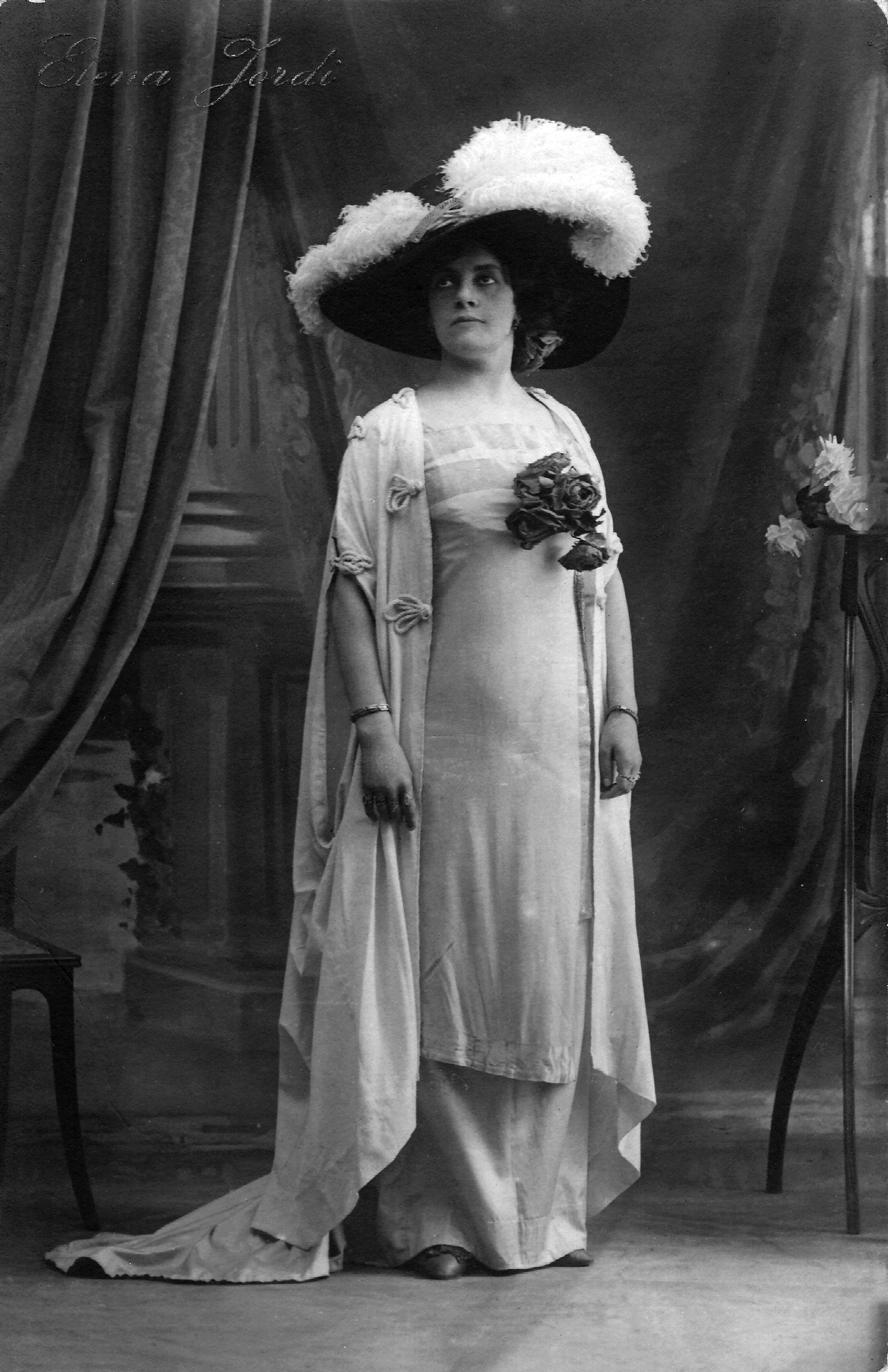
The filmmaker David Casals-Roma is making a documentary, La voz de Thais, which it will be possible to see soon, in which you also participated. Is cinema recovering the first female filmmaker?
David contacted me about four years ago. I always said that we didn’t even know where Elena Jordi was buried. Now everything is digitized. The archivists of Montjuic and Les Corts cemeteries called me one day and told me they’d discovered that Montserrat Casals Baqué was buried in Les Corts cemetery in a grave for which no one was paying and that it was in a precarious state. At the time I’d been investigating for almost five years, so when I went there it was obviously very emotional because it was a deeply heartfelt moment. David took this “anecdote” and wrote the script about a girl who discovers the story of Elena Jordi from the first edition of the book.
On the day of the event at the Filmoteca, Judith Colell said that Elena Jordi deserved a film and that she wanted to make it. It could be a film or a series which shows what the Barcelona of Paralelo was like through a unique character. Elena Jordi’s importance is that her life was like a film.
There is still a lot of mystery surrounding Elena Jordi. Do you think a copy of Thais will be found one day?
I’m going to tell you something although without much conviction. These silent films were distributed; they didn’t have to be dubbed. I have discovered that the films from Studio Films in which her sister Tina Jordi appears were shown in South America and Europe, so there could be a copy somewhere. I’m aware that David Casals and Barbara Zecchi have explored the European film archives, but they didn’t find anything. We have six or seven news items in which it is said that the film was about to be released or that journalists had already seen it, between February and April 1918, but I haven’t found anywhere where it was actually released. It’s a mystery. The magazines from the time always talk about the initial showing and then about the release and where it was, but it’s strange that there isn’t anything about Thais. What if it wasn’t released? Later I discovered that it coincided, in June 1918, with the fire at Hispano Films. It wasn’t just the studios there; there were the laboratories, and the films were kept there. If I was a novelist I’d say that Thais is already celestial ash and was burnt there. This is a mystery that I still hope to be able to clear up. They would be very delicate tapes, and if they haven’t been preserved somewhere it’s very unlikely that their composition has resisted for so many years. This is also part of the legend of Elena Jordi.




